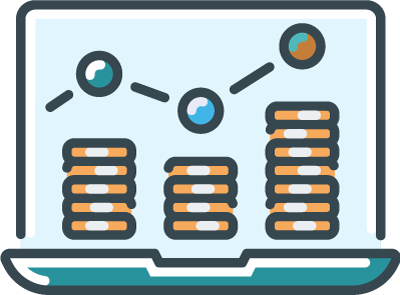Table of Contents
What is the Prime Rate?
 The prime rate is an interest rate that financial institutions charge customers with strong creditworthiness. The federal funds rate is used as a baseline for the prime rate, which financial institutions will then adjust by adding a fixed percentage to assess interest on loans and other borrowings.
The prime rate is an interest rate that financial institutions charge customers with strong creditworthiness. The federal funds rate is used as a baseline for the prime rate, which financial institutions will then adjust by adding a fixed percentage to assess interest on loans and other borrowings.
Existing loans that are assigned a fixed rate are not affected by changes in the prime rate. However, loans with a variable interest rate can change as the prime rate changes. For example, if a business takes out a loan with an interest rate of the primate rate plus one percent, a company could have seen a rate as low as 4.25% in 2020 and as high as 7% in 2022.
How Does the Prime Rate Work?
The prime rate is generally a combination of the federal funds rate plus three. The Federal Open Markets Committee is in charge of setting the federal funds rate, which is the target rate that is used to guide overnight lending by U.S. banks. The federal funds rate is a combination of an upper and a lower limit. For example, 4.25% to 4.50%.
Financial institutions will then add three, or whatever their current policy is, to the federal funds rate to determine the lending rate for a consumer. However, the federal funds rate is only a baseline for determining the prime rate that banks use. There is significant discretion based on the lending history and creditworthiness that drives the true rate customers are charged.
There are different ways to find the prime rate to charge customers besides the federal funds rate. For example, the WSJ Prime takes the average base rate of corporate loans from the top seven to ten largest banks. This serves as an alternative valuation compared to adding three to the federal funds rate.
What is the Prime Rate Used For?
The prime rate is used for various lending needs, from auto loans to mortgages. Banks are the most common financial service business that utilizes the prime rate. The standard prime rate that a bank will use varies based on the financial institution and the loan type. A small business loan may have a different prime rate compared to a mortgage.
 Why is the Prime Rate Important?
Why is the Prime Rate Important?
The prime rate is important to use because it is tied to the federal funds rate, which is founded on avoiding market manipulation. This gives institutions a solid benchmark to determine the lowest acceptable lending rate they can offer. Without the federal funds rate being used to set the prime rate, it can become difficult for consumers to borrow and banks to manage what rates they should be placing on loans.
In addition, in periods of high inflation and economic uncertainty, it can be difficult to implement a competitive rate that doesn’t worsen economic conditions. When there is a benchmark to follow that is regularly adjusted for the direction the economy is headed, banks can make strong lending conditions and help avoid economic disaster.
The prime rate is also important for consumers to have the opportunity to secure lending in the form of lines of credit and installment loans. When the prime rate is constantly adjusted to work alongside interest rates, it can make borrowing decisions easier. Furthermore, consumers have a reduced risk of receiving unfavorable interest rates when financial institutions follow a set standard.
What are the Disadvantages of the Prime Rate?
The prime rate can present risks and challenges to financial institutions when rates are rising. The first challenge is the use of the prime rate. The prime rate can be difficult to apply to individual loans compared to corporate borrowers. This is because mortgages are often fixed loans, while corporate borrowers will have a loan or line of credit with an interest rate based on the prime rate and a certain amount of percentage points.
How Can Financial Institutions Minimize the Impact of Rising Interest Rates?
Inflation and interest rates are positively correlated. As inflation increases, the interest rates will generally simultaneously increase to encourage less spending and more saving. In the past few years, interest rates have been rising, making the cost of borrowing more expensive for consumers. This means that banks are facing less demand for new loans, making it important to find ways to encourage borrowing.
Bank lending policies have tightened up since the housing market crash in 2008. This results in minimal leeway for banks to lower the prime rate for customers who are seeking new borrowings. However, banks can reevaluate their internal policies and adjust their risk tolerance by analyzing the lending and credit history of their customers. On the internal side, banks manage interest rate risk by engaging in hedging transactions. One strategy is to match the maturities of obligations.
Summary
The prime rate is an integral component of your financial institution as it dictates the interest rate you charge customers. Understanding how to manage the impact of rising federal funds rate and inflation can be difficult, especially as lending becomes more challenging for consumers to obtain.